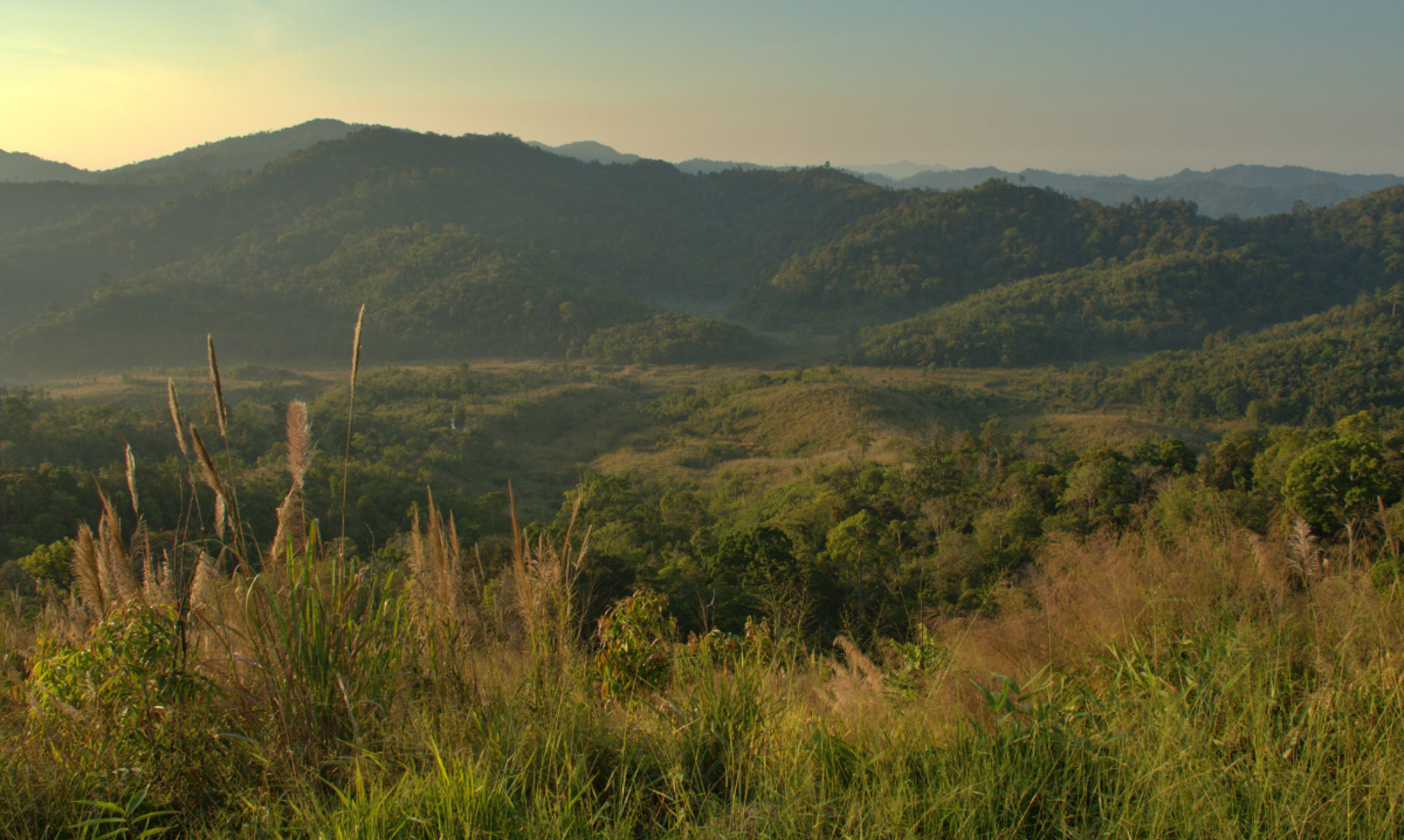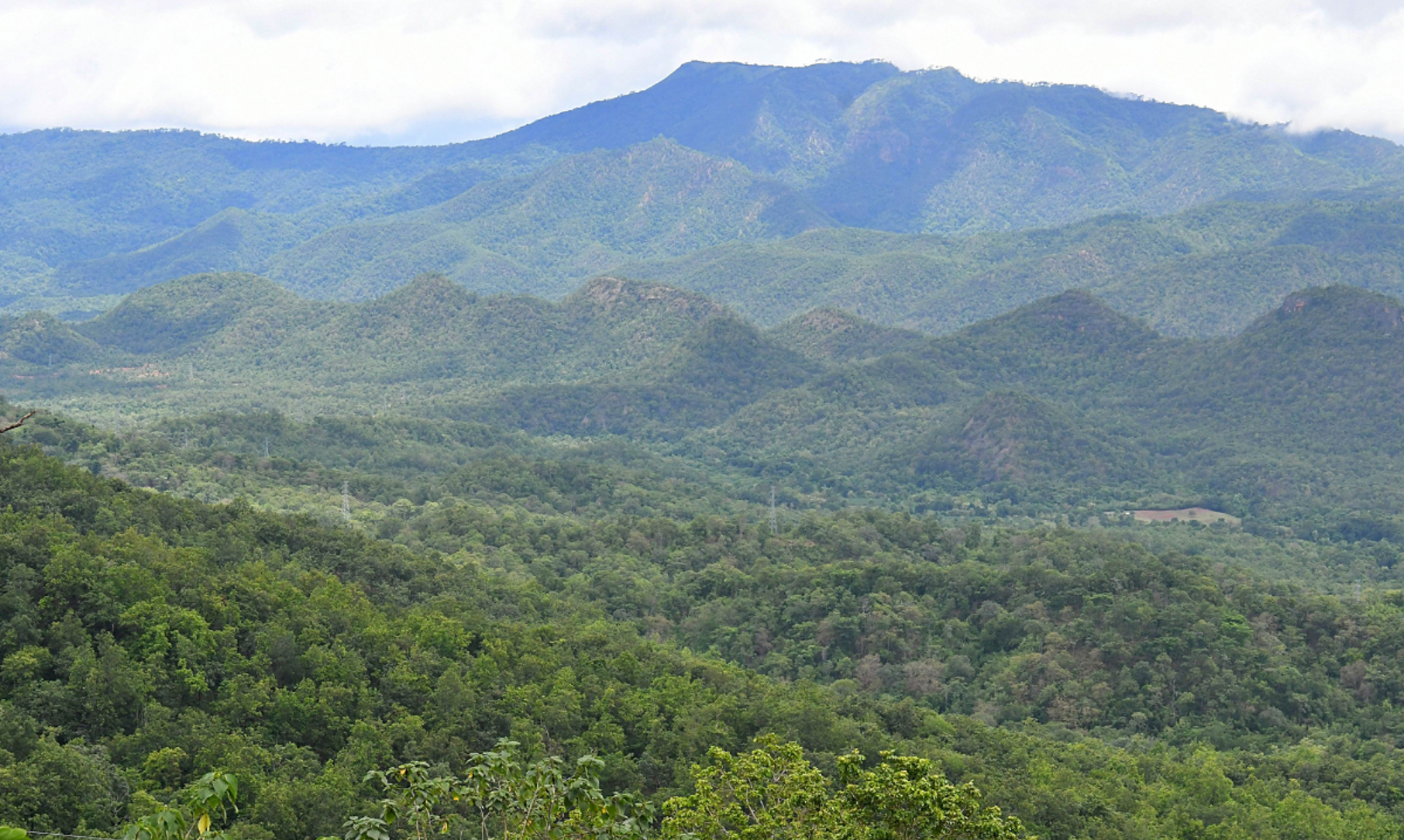Thailand boasts diverse forest landscapes, from tropical rainforests and deciduous forests to mangroves, harboring rich biodiversity, including many endemic and endangered species. However, the country has faced significant deforestation due to agricultural expansion, illegal logging, and urban development, reducing forest cover from 53% in 1961 to about 25% in 1998. In recent years, Thailand has committed to protecting or conserving 30% of its lands and waters by 2030.
In collaboration with WWF-Switzerland and WWF-Thailand, we aim to support this "30% by 2030" target by improving forest conditions in three unique landscapes: Dawna Tenasserim, Lower Songkram, and Dong Phayayen, benefiting 60,000 hectares of forest.
Heart of the Dawna Tenasserim
Southeast Asia’s largest and most intact forest landscape, spanning 5.6 million hectares and hosting 74 protected areas. This pristine environment is home to the last robust tiger and leopard populations, numerous primates, 560 bird species, healthy Asian elephant populations,
and the northernmost Malayan tapirs. Despite its richness, the landscape faces threats such as forest degradation due to agriculture and infrastructure, illegal logging, forest fragmentation, and increasing drought and wildfires. Opportunities exist to reconnect a 600-kilometer tiger landscape, restore leopard habitat, reduce deforestation, and enhance forest conservation beyond protected areas.

Lower Songkram Flooded Forests
One of Thailand’s last remaining flooded forests, essential for freshwater wetland ecological integrity and resilience. It serves as a critical spawning and breeding site for globally endangered species, including the Mekong Giant Catfish, migratory birds, fishing cats, and otters. Acting as an ecological corridor, it contributes to climate change mitigation, water quality improvement, and food security for local communities. The landscape faces threats from climate change, riverine forest loss, fisheries decline, and inconsistent management. Opportunities include reducing forest degradation, increasing forest area, improving biodiversity conservation, and collaborating with various departments and communities to restore and manage the ecosystem.

Dong Phayayen Khao Yai Forest Complex
A biodiversity hotspot and World Heritage Site, home to Thailand’s second-largest tiger and elephant populations, and the world’s largest remaining stands of Siamese rosewood. Despite its ecological importance, threats include forest degradation, illegal logging, inadequate management, human-wildlife conflict, and unsustainable tourism development. Opportunities include protecting forests, ensuring wildlife movement through wildlife crossings, maintaining tiger habitats, and promoting human-wildlife coexistence.

Project Objectives
Secure corridors for ecosystem connectivity
- Reconnect the Western and Mae Ping Forest Complexes to facilitate big cat return through permanent forest protection, improved management, and infrastructure mitigation.
- Activities include building forest agency capacity, evaluating wildlife crossing options, and enhancing habitat connectivity to promote tiger dispersal and reduce human-elephant conflict.
- Identify and implement OECMs (other effective area-based conservation measures) on high biodiversity value Royal Forest Department lands.
Strengthen and expand protected lands
- Restore and protect 92 kilometers of riparian and seasonal flooded forests, including Ramsar sites, through community-driven activities such as establishing nurseries, reforestation, fire protection, and restoration planning.
- Gazette new Protected Areas and identify OECMs, focusing on management plans and zoning.
- Enhance drone operations for forest management and enforcement, secure land tenure, and improve management of Ramsar sites and community forests.
- Implement long-term solutions to human-wildlife conflict.
Engage communities in conservation and provide alternative livelihoods
-
Support social and economic mapping, establish or improve community enterprises (e.g., fish processing, NTFP (non-timber forest products) processing, and ecotourism), and promote agroforestry.
-
Provide technical support to community groups with revolving funds, and enhance capacities in accounting, business development, and marketing.
-
Ensure sustainability through training on business standards and local branding.
Read about our other partnership projects
Restoring forest landscapes in Mexico and protecting biodiversity in Malaysia
In Mexico, our project is improving landscape management on 100,000 hectares and reforesting and restoring a further 750 hectares of degraded forest.
In Malaysia, we aim to improve landscape management of 172,563 hectares of forest and restore an additional 25 hectares of degraded forest in Ulu Muda Forest Complex.

All photos © or used with permission of WWF.

